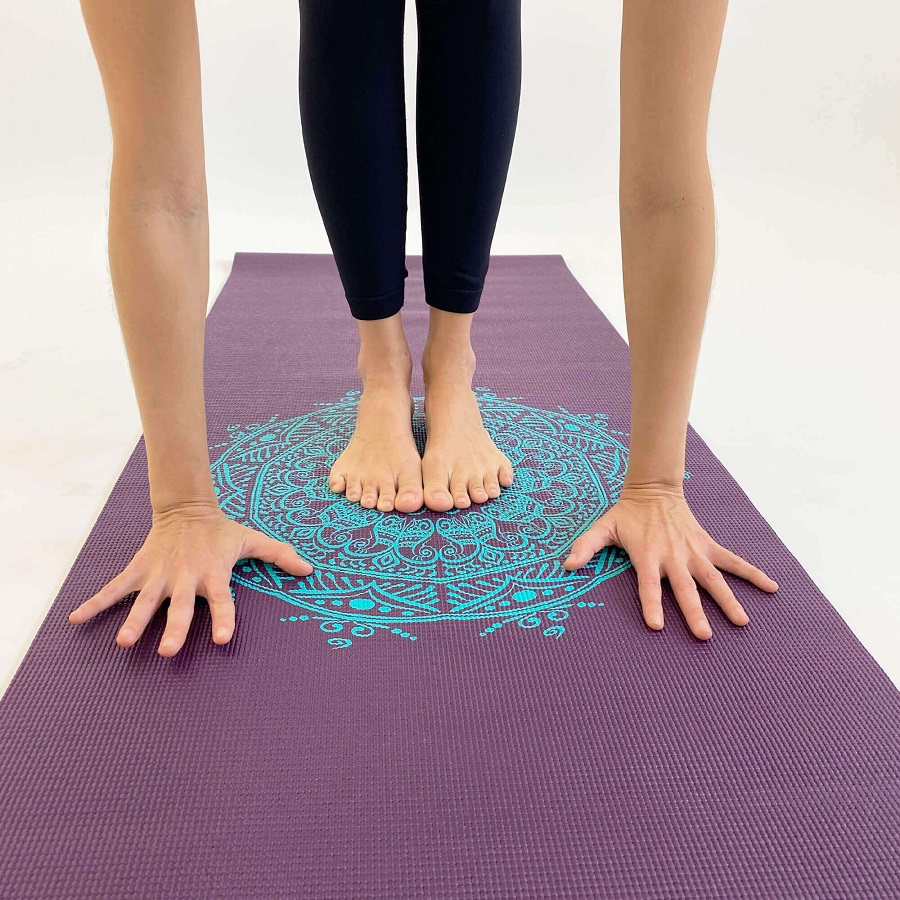
Yoga is a great way to stay fit, healthy, and relaxed. It is a form of exercise that not only helps in keeping one’s body in shape but also helps in maintaining a positive mindset. Practicing yoga outdoors can be a great way to connect with nature and bring a new dimension to your practice. However, choosing the right yoga mat for outdoor practice can be a challenging task, given the varied terrain and weather conditions that one may encounter while practicing outside. In this article, we will be discussing how to choose a yoga mat for outdoor practice.
Thickness
One of the most important factors to consider when choosing a yoga mat for outdoor practice is thickness. The thickness of the mat will determine the level of cushioning that it provides. A thicker mat will provide more cushioning and support, making it ideal for outdoor practice on rough and uneven terrain. It will also help in protecting the joints and bones while performing yoga poses. However, a thicker mat may not be as portable and may be heavier to carry around.
Material
The material of the yoga mat is another important factor to consider when choosing a yoga mat for outdoor practice. The material should be durable and able to withstand the elements. Common materials used for yoga mats include natural rubber, PVC, and TPE. Natural rubber is the most eco-friendly option and provides good grip and traction. PVC is the most affordable option but is not eco-friendly and may not provide good grip and traction. TPE is an eco-friendly option that provides good grip and traction, but it may not be as durable as other materials.
Portability
Portability is another important factor to consider when choosing a yoga mat for outdoor practice. The mat should be lightweight and easy to carry around. A lighter mat will be easier to transport and store, making it ideal for outdoor practice. It is also a good idea to choose a mat that comes with a carrying strap or bag, making it easier to carry around.
Grip
Grip is a vital factor to consider when choosing a yoga mat for outdoor practice. The mat should provide good grip and traction, especially on uneven terrain. A mat that slips or slides can cause injury and make it difficult to hold poses. A mat with good grip will help in maintaining balance and stability while performing yoga poses.
Size
The size of the yoga mat is another important factor to consider when choosing a yoga mat for outdoor practice. The size of the mat should be appropriate for the type of outdoor practice that you plan to do. A standard yoga mat is usually 68 inches long and 24 inches wide. However, if you plan to practice on rough terrain, it may be a good idea to choose a larger mat that provides more space to move around.
Moisture-Resistance
Moisture-resistance is an important factor to consider when choosing a yoga mat for outdoor practice. The mat should be able to repel moisture and keep the surface dry. A mat that absorbs moisture can become slippery and difficult to grip, making it dangerous to practice on. It is also a good idea to choose a mat that is easy to clean and can be wiped down quickly after use.
Conclusion
Choosing the right yoga mat for outdoor practice is essential for anyone who loves to practice yoga in nature. When choosing a yoga mat, it is essential to consider factors such as thickness, material, portability, grip, size, and moisture-resistance. A thicker mat will provide more cushioning and support, while a lighter mat will be more portable. The material should be durable and able to withstand the elements. The mat should provide good grip and traction, especially on uneven terrain. The size of the mat should be appropriate for the type of outdoor practice that you plan to do. Finally, the mat should be moisture-resistant and easy to clean. By considering these factors, one can choose a yoga mat that will help in achieving their fitness goals while connecting with nature.

